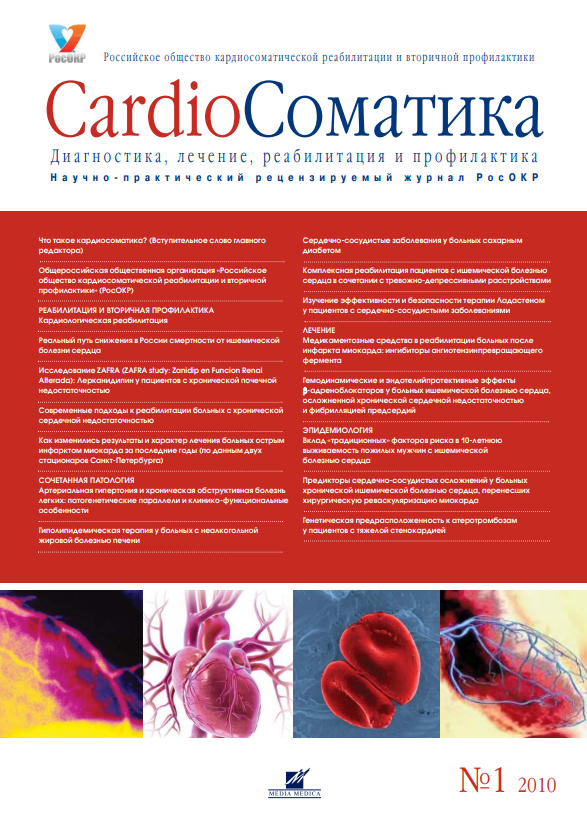Predictors of cardiovascular events in patients with chronic heart disease after surgical myocardial revascularization (according to the data of a long-term observation)
- Authors: Shalayev S.V1, Arutyunyan L.A1
-
Affiliations:
- Regional Cardiology Dispensary, Tyumen Regional Clinical Hospital, Tyumen
- Issue: Vol 1, No 1 (2010)
- Pages: 75-79
- Section: Articles
- URL: https://journals.rcsi.science/2221-7185/article/view/44982
- DOI: https://doi.org/10.26442/CS44982
- ID: 44982
Cite item
Full Text
Abstract
Full Text
##article.viewOnOriginalSite##About the authors
S. V Shalayev
Regional Cardiology Dispensary, Tyumen Regional Clinical Hospital, Tyumenд-р мед. наук, проф., засл. деят. науки РФ, руководитель Областного кардиологического диспансера ГЛПУ «Тюменская областная клиническая больница», зав. каф. кардиологии ФПК и ППС Тюменской государственной медицинской академии
L. A Arutyunyan
Regional Cardiology Dispensary, Tyumen Regional Clinical Hospital, Tyumenканд. мед. наук, врач-кардиохирург отделения кардиохирургии № 3 ГЛПУ «Тюменская областная клиническая больница»
Supplementary files







